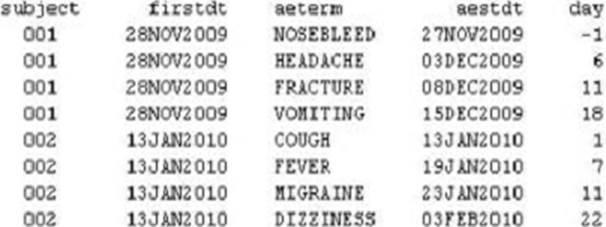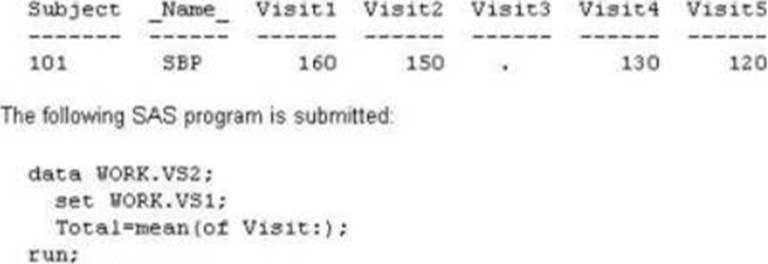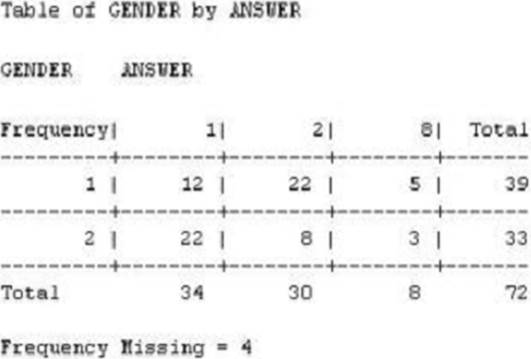SAS Institute A00-282 SAS Certified Professional – Clinical Trials Programming Using SAS 9.4 Online Training
SAS Institute A00-282 Online Training
The questions for A00-282 were last updated at Mar 12,2025.
- Exam Code: A00-282
- Exam Name: SAS Certified Professional - Clinical Trials Programming Using SAS 9.4
- Certification Provider: SAS Institute
- Latest update: Mar 12,2025
Which function would be used to determine the number of elements in an existing array?
- A . dim ()
- B . n ()
- C . sum ()
- D . count ()
Identify the data structure with the following characteristics:
– Contains one or more records per subject, per analysis parameter, and per analysis timepoint.
– May be derived from findings, events, interventions and special-purpose SDTM domains, or other ADaM datasets.
– A record can represent an observed, derived, or imputed value required for analysis.
- A . General Data Structure (GDS)
- B . Basic Data Structure (BDS)
- C . Subject Level Analysis Data Set (ADSL)
- D . Event Level Analysis Data Set (ADAE)
Which code segment includes a statement that would reset the graphics counter and ensure a 6in by 4in image is produced?
- A . ods graphics / counter = 1 width = 6in height = 4in;
- B . ods graphics / width = 6in height = 4in reset;
- C . ods graphics / reset width = 6in height = 4in;
- D . ods graphics / width = 6in height = 4in counter = 1;
Given the following data set (AE):

Data will be reported by onset week. Day 1?
7 is Week 1, Day 8 ?14 is Week 2. Events beyond Day 14 are assigned Week 3 and will be reported as Follow-up events.
Which statements properly assign WEEK to each event?
- A . if day > 14 then week = 3; else if day > 7 then week = 2; else if day > 0 then week = 1;
- B . if day > 0 then week = 1; else if day > 7 then week = 2; else if day > 14 then week = 3;
- C . select; when (day > 0) week = 1; when (day > 7) week = 2; otherwise week = 3; end;
- D . select; when (day > 14) week = 3; when (day > 7) week = 2; otherwise week = 1; end;
Given the SAS data set WORK.VS1:

Which value will be assigned to variable TOTAL?
- A . missing
- B . 112
- C . 140
- D . 560
Which percentage in the table is calculated incorrectly, assuming the cell counts are correct? Percentages are rounded to the nearest whole percent.

- A . 40
- B . 44
- C . 54
- D . 52
The following SAS program is submitted:

If the value for the variable Subjcode is "WGT2", what is the value of the variable Description?
- A . missing character value
- B . Unknown
- C . Over
- D . Wgt2
The following output is displayed:

Which SAS program created this output?
- A . proc freq data=WORK.TESTDATA; tables gender * answer / nocol norow nopercent; run;
- B . proc freq data=WORK.TESTDATA; tables answer * gender / nocol norow nopercent; run;
- C . proc freq data=WORK.TESTDATA; tables gender * answer / nocol norow nopercent missing; run;
- D . proc freq data=WORK.TESTDATA; tables answer * gender / nocol norow nopercent missing;
Given the following code executed with system date and time of April 29, 2020 at 10:33 AM:
data _null_;
daytim=put("&sysdate"d,date9.)||" "||put("&systime"t,time8.);
call symputx("nowdate", daytim);
run;
%put &nowdate;
The output of the macro variable "nowdate" in the log will be:
- A . &nowdate
- B . 29APR2020 10:33 AM
- C . daytim
- D . 29APR2020 10:33:00
Which statement correctly adds a label to the data set?
- A . DATA two Label="Subjects having duplicate observations"; set one; run;
- B . DATA two; Label="Subjects having duplicate observations"; set one; run;
- C . DATA two; set one; Label dataset="Subjects having duplicate observations"; run;
- D . DATA two (Label="Subjects having duplicate observations"); set one;
Latest A00-282 Dumps Valid Version with 145 Q&As
Latest And Valid Q&A | Instant Download | Once Fail, Full Refund

